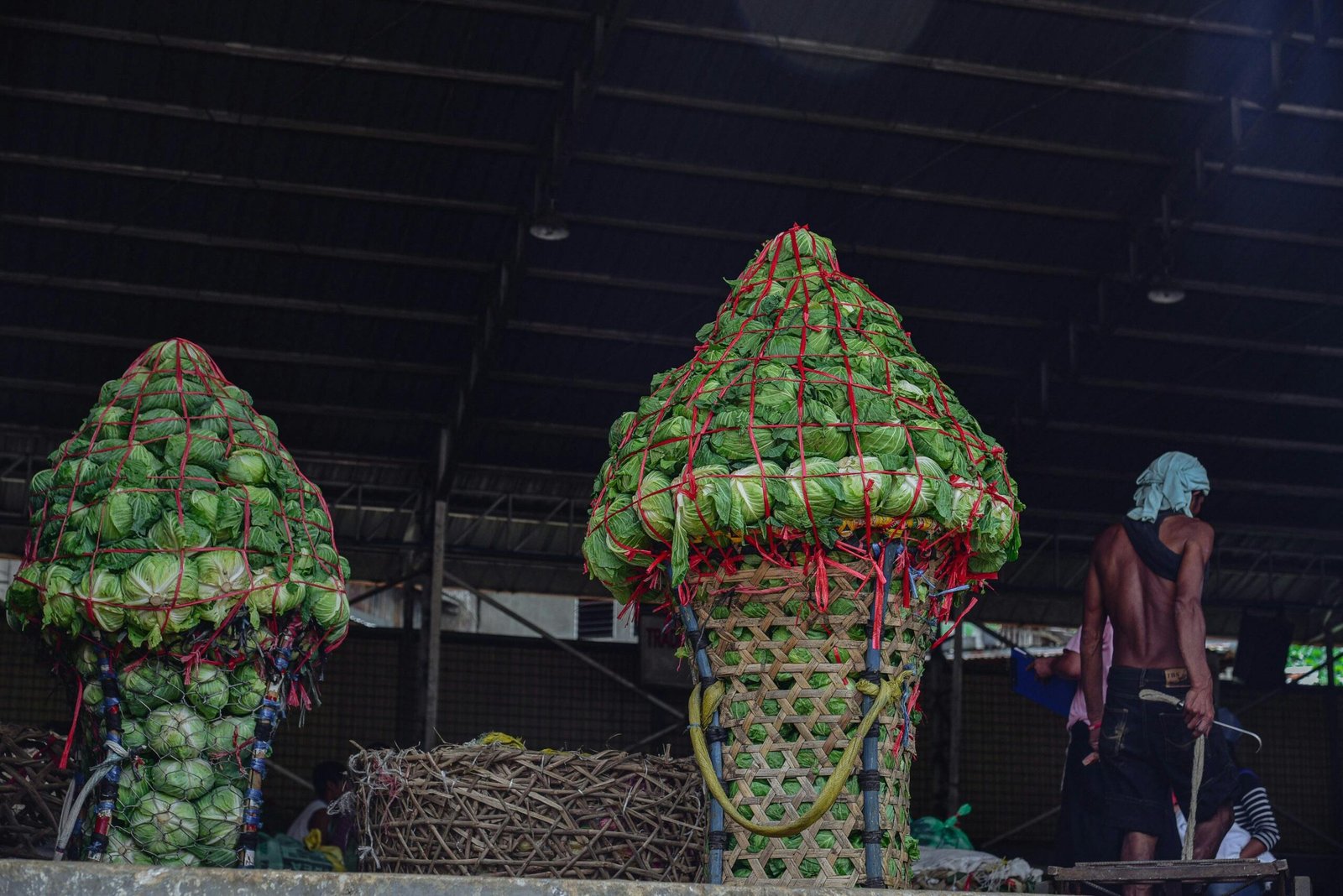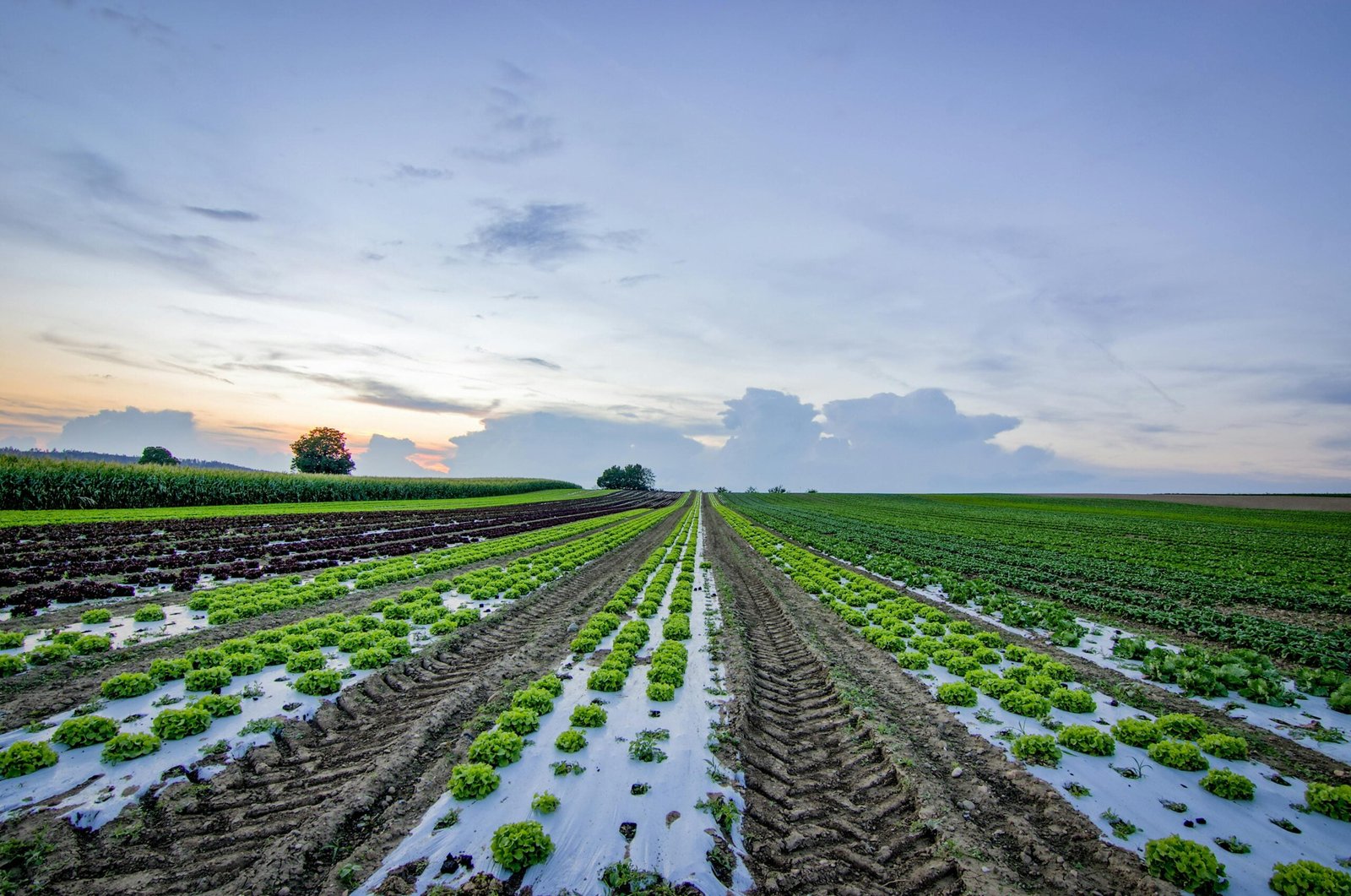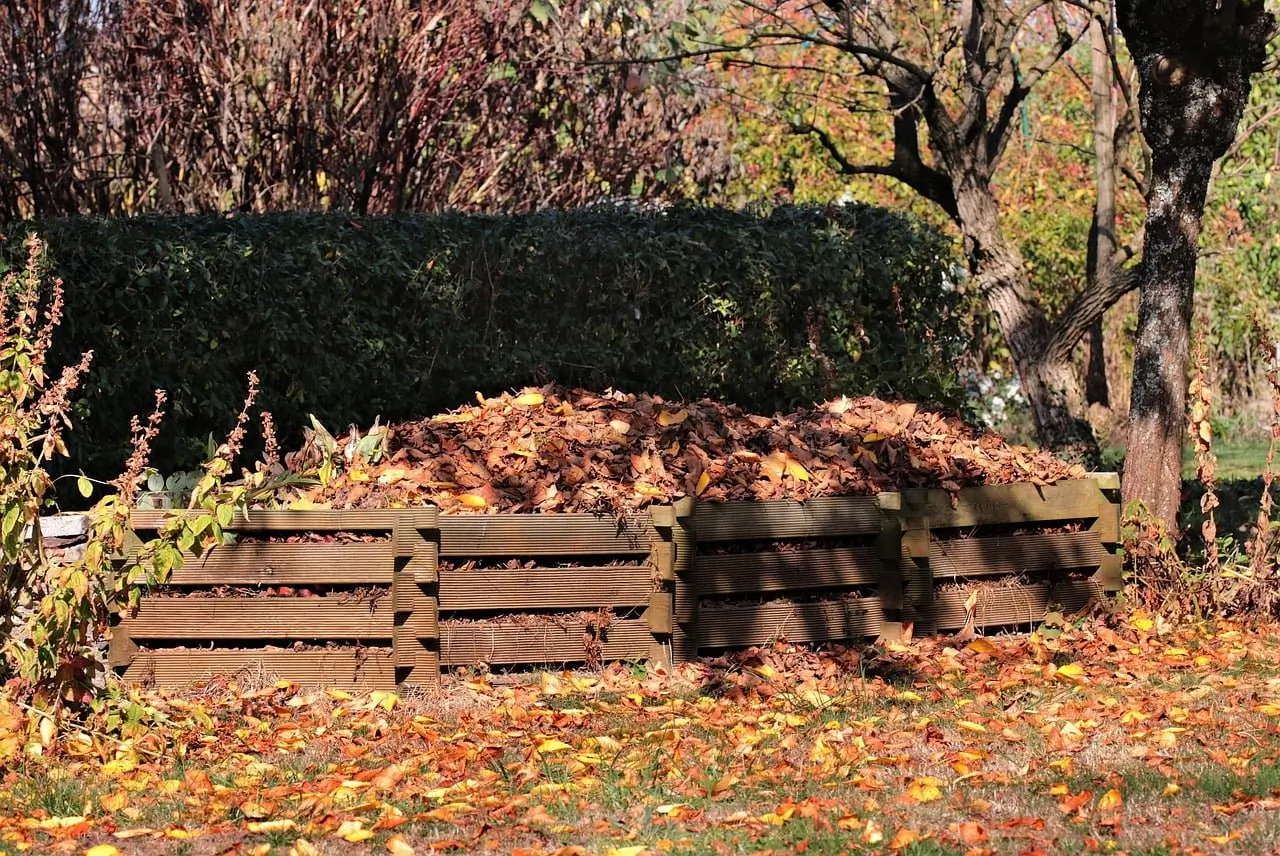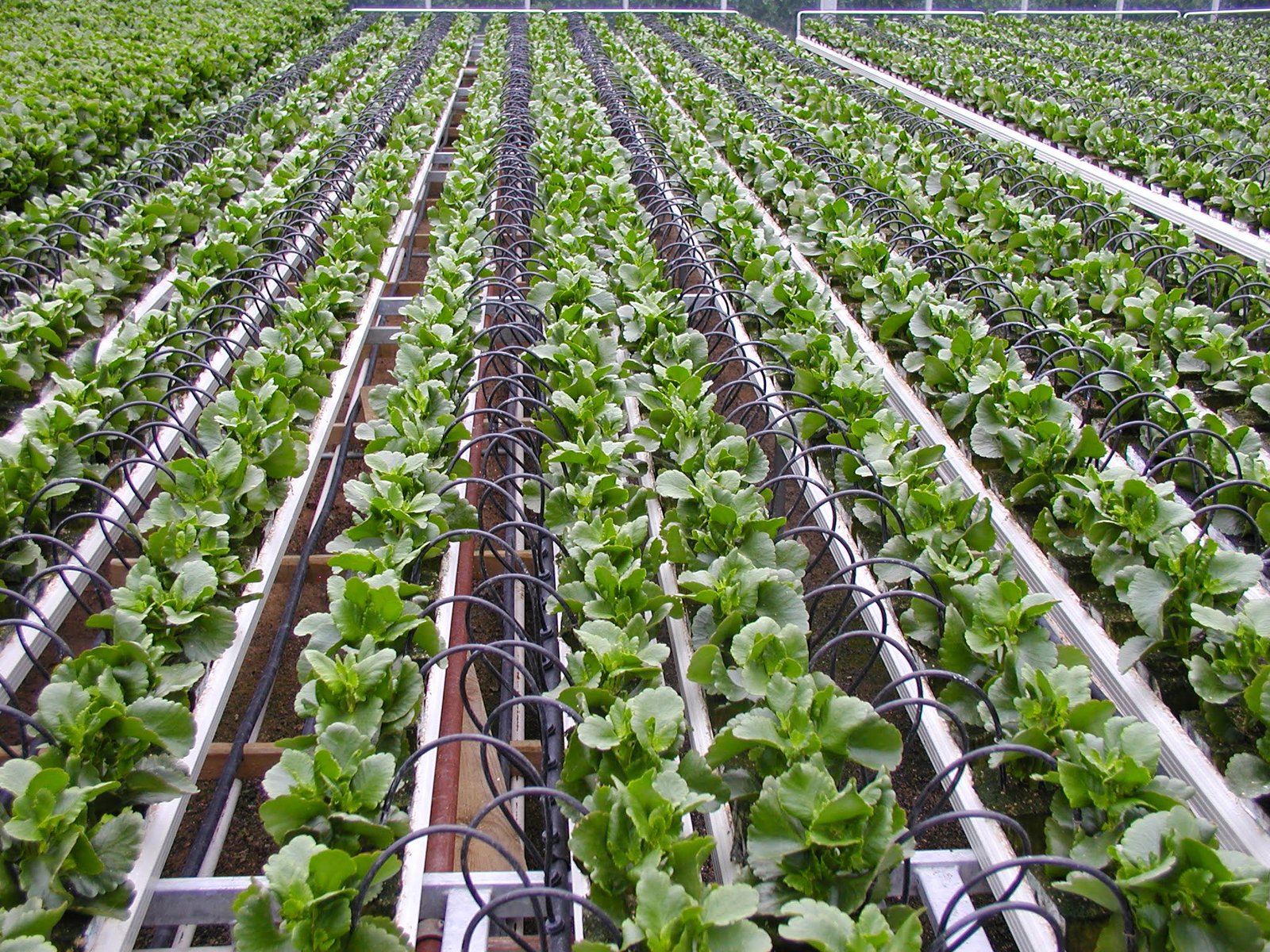
Summary of Contents
Introduction
Organic farming has grown rapidly as farmers and consumers seek more sustainable and healthier methods of food production. The adoption of innovative organic farming techniques has played a crucial role in improving farm productivity while protecting the environment. These methods focus on natural processes, from enhancing soil health to managing pests without synthetic chemicals.
As an organic farmer for over a decade, I’ve witnessed firsthand the transformative power of these techniques. In this article, we’ll explore nine innovative organic farming techniques that are helping farmers worldwide create more sustainable, productive, and resilient farms.
We’ll dive into the definition, benefits, challenges, and best practices for each method, along with the economic insights on how they can impact farm profitability. By the end of this guide, you’ll have a clear understanding of how these organic farming methods can be applied to improve your farm’s sustainability and productivity.
Crop Rotation
Crop rotation is a farming practice where different crops are grown in a specific sequence on the same land to prevent nutrient depletion, control pests and diseases, and improve soil health. By rotating crops with varying nutrient demands and root structures, farmers can enhance soil fertility and reduce the need for chemical fertilizers.
Crop rotation also disrupts the lifecycle of pests and diseases, making it harder for them to establish themselves in the soil. This technique has been practiced for centuries and remains a cornerstone of sustainable agriculture, particularly in organic farming, as it naturally balances the ecosystem without synthetic inputs.

Benefits:
- Improves Soil Fertility: Leguminous crops can naturally fix nitrogen, enriching the soil for future crops.
- Pest and Disease Control: Alternating crops reduces the buildup of pests and diseases associated with monocropping.
- Increases Yield: Promotes better crop performance by maintaining soil nutrients.
Challenges:
- Planning: Requires careful planning to ensure crop rotations are properly timed for maximum benefit.
- Crop Selection: Not all crops are suitable for all soils or climates, making it essential to choose wisely.
Best Practices:
- Three-Crop Rotation: Implement a three-crop rotation system that includes legumes, cereals, and root crops to maintain a balance of nutrients.
- Cover Crops: Use cover crops like clover or vetch between main crops to further boost soil health.
Economic Insights:
- Cost Savings: Reduces the need for synthetic fertilizers, leading to lower input costs.
- Long-Term Productivity: Though initial planning can be time-consuming, crop rotation increases yields and enhances long-term soil health, which boosts profitability over time.
Green Manure
Green manure involves growing specific cover crops, typically legumes, and then plowing them back into the soil to enrich it with organic matter and nutrients, particularly nitrogen. These crops are grown specifically to be incorporated into the soil rather than harvested for food or sale.
The use of green manure improves soil structure, boosts fertility, and enhances water retention. By adding organic matter to the soil, green manure helps increase microbial activity, leading to healthier soil and better crop yields. It’s a key practice in organic farming, promoting sustainability and reducing the need for synthetic fertilizers.

Benefits:
- Soil Fertility: Green manure crops, like legumes, fix nitrogen in the soil, enhancing nutrient availability.
- Erosion Control: The roots of green manure crops prevent soil erosion and improve water retention.
Challenges:
- Seasonal Timing: Timing is critical for green manure crops, as they must be planted and plowed at the right time.
- Extra Work: Requires additional work to manage and plow green manure crops back into the soil.
Best Practices:
- Fast-Growing Crops: Use fast-growing green manure crops like clover or rye that can be quickly incorporated back into the soil before planting the main crop.
- Multi-Purpose Crops: Choose crops that also help suppress weeds, improving overall soil health.
Economic Insights:
- Lower Input Costs: Reduces the need for chemical fertilizers by naturally enriching the soil.
- Increased Yields: Healthier soil leads to higher crop yields, increasing the farm’s overall profitability.
Composting
Composting is the process of decomposing organic waste materials such as plant residues, manure, and food scraps into nutrient-rich humus. This decomposed material is then used as a natural fertilizer to improve soil health and support plant growth.
Composting not only reduces waste but also returns essential nutrients to the soil, enhancing its structure and water-holding capacity. It is a fundamental technique in organic farming, allowing farmers to recycle farm waste and minimize the use of chemical fertilizers, contributing to a more sustainable farming ecosystem.

Benefits:
- Nutrient-Rich Soil: Compost adds essential nutrients back into the soil, improving plant health.
- Waste Reduction: Turns farm waste into valuable compost, reducing disposal costs and environmental impact.
Challenges:
- Labor-Intensive: Composting requires regular monitoring and turning to maintain the proper balance of materials.
- Odor Management: Poorly managed compost piles can produce unpleasant odors.
Best Practices:
- Balanced Mix: Maintain a balance between green (nitrogen-rich) and brown (carbon-rich) materials for effective composting.
- Aeration: Regularly turn compost piles to ensure proper aeration and prevent anaerobic conditions.
Economic Insights:
- Low-Cost Fertilizer: Composting reduces the need for purchasing fertilizers, offering substantial cost savings.
- Increased Crop Productivity: Compost improves soil structure, leading to healthier plants and better yields over time.
Mulching
Mulching involves covering the soil with organic or inorganic materials, such as straw, wood chips, or compost, to conserve moisture, suppress weeds, regulate soil temperature, and improve soil health. Mulch also helps prevent soil erosion and provides essential nutrients as it decomposes.
By reducing the need for water and minimizing weed growth, mulching plays an important role in resource conservation on organic farms. It creates a more stable environment for plants and promotes healthier, more resilient crops, especially in areas prone to drought or soil erosion.

Benefits:
- Water Conservation: Mulch helps retain soil moisture, reducing the need for frequent irrigation.
- Weed Suppression: Prevents weed growth, reducing the need for manual weeding or herbicides.
Challenges:
- Material Sourcing: Organic mulch materials like straw or wood chips may not always be readily available.
- Initial Cost: The upfront cost of purchasing and applying mulch can be significant.
Best Practices:
- Organic Mulches: Use materials like straw, leaves, or compost to naturally suppress weeds and improve soil quality.
- Proper Thickness: Apply mulch at a depth of 2-4 inches to maximize water retention and weed suppression.
Economic Insights:
- Labor Savings: Reduces the need for weeding and irrigation, saving time and money in labor costs.
- Improved Yields: Mulching improves soil health, leading to better crop performance and increased revenue.
Agroforestry
Agroforestry integrates trees and shrubs into traditional farming systems, where they coexist with crops or livestock to create a more biodiverse, productive, and sustainable farming ecosystem. The trees provide shade, enhance soil fertility, prevent erosion, and improve water retention.
This technique enhances biodiversity on the farm, supports wildlife, and contributes to long-term soil health. Agroforestry systems are particularly beneficial in areas with degraded soils or sloped terrains, as they offer environmental and economic benefits through multiple harvests (timber, fruits, crops) and improved farm resilience.

Benefits:
- Soil Improvement: Tree roots improve soil structure and fertility by preventing erosion and adding organic matter.
- Biodiversity: Promotes a healthy ecosystem that supports beneficial insects and wildlife.
Challenges:
- Space Requirements: Requires larger land areas to accommodate trees and crops together.
- Long-Term Investment: Trees take time to grow before providing benefits such as fruit or shade.
Best Practices:
- Alley Cropping: Plant trees in rows with crops in between (alley cropping) to maximize land use and improve soil health.
- Tree Selection: Choose tree species that are complementary to your crops, such as nitrogen-fixing species that improve soil fertility.
Economic Insights:
- Diversified Income: Agroforestry offers multiple income streams, from timber and fruit to livestock and crops.
- Long-Term Sustainability: While initial costs can be high, agroforestry provides long-term environmental and economic benefits, including improved soil health and reduced input costs.
Vermicomposting
Vermicomposting is the process of using earthworms, typically red wigglers, to break down organic waste into nutrient-rich compost. The worms consume organic matter, producing castings that are incredibly high in nutrients and beneficial microbes.
This method accelerates the composting process and produces a superior quality fertilizer, ideal for organic farming. Vermicompost improves soil aeration, water retention, and nutrient availability, making it a valuable tool for enhancing soil fertility and supporting sustainable agricultural practices.

Benefits:
- Faster Composting: Worms accelerate the decomposition process, producing compost more quickly than traditional methods.
- Nutrient-Dense Compost: Vermicompost is rich in nutrients and beneficial microbes, improving soil structure and fertility.
Challenges:
- Temperature Sensitivity: Worms are sensitive to temperature changes and must be kept in optimal conditions for composting.
- Limited Scale: Vermicomposting is more effective on a small scale, making it challenging for larger farms.
Best Practices:
- Worm Species: Use red wigglers or European nightcrawlers for efficient vermicomposting.
- Temperature Control: Keep the compost bin in a cool, shaded area to protect worms from extreme temperatures.
Economic Insights:
- Low Input Costs: Vermicomposting can be done with minimal investment, as worms feed on kitchen scraps and plant waste.
- Improved Crop Yields: The high nutrient content of vermicompost leads to better crop performance and increased profits.
No-Till Farming
No-till farming is a conservation agriculture practice where the soil is left undisturbed by avoiding traditional tilling or plowing. Seeds are directly sown into the residue of previous crops, preserving soil structure, reducing erosion, and improving moisture retention.
No-till farming minimizes soil disruption, promoting healthier soil ecosystems with better organic matter retention. This method helps prevent soil degradation, making it ideal for farms focused on long-term sustainability and reducing the carbon footprint associated with conventional plowing.

Benefits:
- Soil Health: Maintains soil structure and organic matter, reducing erosion and improving fertility.
- Water Conservation: No-till farming improves water retention, reducing the need for irrigation.
Challenges:
- Weed Management: Without tilling, weeds can become a problem and may require additional labor or organic herbicides.
- Specialized Equipment: Requires specific no-till seed drills, which can be costly to purchase.
Best Practices:
- Cover Crops: Plant cover crops between growing seasons to suppress weeds and improve soil fertility.
- Direct Seeding: Use no-till seed drills to plant crops directly into the soil, reducing disruption to the soil structure.
Economic Insights:
- Lower Labor Costs: Reduces the need for labor-intensive tilling, saving time and money.
- Improved Long-Term Yields: Healthier soil leads to better water retention and increased yields over time, improving profitability.
Integrated Pest Management (IPM)
Integrated Pest Management (IPM) is a holistic approach to managing pests that combines biological, cultural, mechanical, and chemical methods (only organic-approved chemicals) to control pest populations while minimizing harm to the environment and non-target species.
IPM emphasizes prevention and natural pest control methods, such as introducing beneficial insects, using crop rotations, and applying organic pesticides only when necessary. This strategy helps reduce reliance on harmful chemicals, promoting a healthier, more balanced ecosystem on organic farms.

Benefits:
- Reduced Chemical Use: Minimizes the use of synthetic pesticides, making farming more environmentally friendly.
- Pest Resistance: Helps prevent the development of pest resistance that can occur with overuse of chemicals.
Challenges:
- Complexity: Requires a deep understanding of pest behavior, crop cycles, and beneficial insects.
- Time-Intensive: Monitoring and managing pests without chemicals can take more time and effort.
Best Practices:
- Natural Predators: Introduce beneficial insects like ladybugs to control pest populations.
- Crop Diversification: Plant a variety of crops to reduce the risk of pest outbreaks and improve ecosystem resilience.
Economic Insights:
- Reduced Input Costs: IPM lowers the need for expensive pesticides, reducing overall input costs.
- Healthier Crops: By maintaining a balanced ecosystem, IPM produces healthier crops that can command higher prices.
Drip Irrigation
Drip irrigation is an efficient watering system that delivers water directly to the plant’s roots through a network of tubes and emitters, reducing water waste through evaporation or runoff. This method provides precise moisture control, ensuring plants receive the right amount of water for optimal growth.
Drip irrigation is especially beneficial in dry regions or water-scarce environments, where water conservation is essential. By delivering water directly to the roots, it improves plant health, reduces weed growth, and supports sustainable farming practices by conserving valuable water resources.

Benefits:
- Water Conservation: Delivers water directly to the roots, reducing evaporation and waste.
- Improved Plant Health: Provides consistent moisture, reducing plant stress and improving growth.
Challenges:
- Initial Setup Costs: Drip irrigation systems can be expensive to install, especially on large farms.
- Maintenance: Drip systems require regular maintenance to prevent clogging and ensure proper water flow.
Best Practices:
- Zone Irrigation: Set up drip irrigation in zones to control water delivery to different areas based on plant needs.
- Water Filtration: Use a filtration system to prevent debris from clogging the drip lines.
Economic Insights:
- Long-Term Savings: While the initial investment is high, drip irrigation reduces water usage and labor costs over time, making it a cost-effective solution for larger farms.
- Increased Yields: Consistent watering leads to healthier plants and higher yields, improving farm profitability.
Conclusion
Organic farming techniques offer a sustainable, eco-friendly approach to agriculture, helping farmers improve productivity while protecting the environment. By incorporating practices such as crop rotation, composting, and drip irrigation, farmers can maintain soil health, reduce reliance on synthetic chemicals, and promote biodiversity. While these methods present challenges, their long-term benefits far outweigh the initial difficulties, providing healthier crops, improved soil fertility, and a more resilient farming system. With the growing demand for organic produce, adopting innovative organic farming techniques is not just good for the planet, but also a smart economic choice for farmers.
FAQ Section
What are the organic farming methods?
Organic farming methods include techniques such as crop rotation, composting, green manure, vermicomposting, and integrated pest management.
What are 5 advantages of organic farming?
Organic farming provides multiple advantages, including environmental, economic, and health benefits. It promotes sustainable practices that protect the soil, reduce chemical use, and improve biodiversity, all while ensuring higher-quality produce for consumers.
Advantages of Organic Farming:
Better Soil Health: Organic farming improves soil structure and fertility through natural methods like composting and crop rotation.
Reduced Chemical Use: By avoiding synthetic pesticides and fertilizers, organic farming reduces harmful environmental pollution.
Increased Biodiversity: Organic farms support more diverse ecosystems, encouraging wildlife and beneficial insects.
Healthier Crops: Organic farming produces crops that are free from chemical residues, making them safer and healthier for consumption.
Sustainability: Organic farming practices are designed to be sustainable, preserving the environment for future generations.
What is the biggest problem for organic farmers?
The biggest problem for organic farmers is managing pests and diseases without synthetic pesticides, which can increase labor and operational costs.
Who benefits from organic farming?
Consumers, farmers, and the environment all benefit from organic farming. Consumers enjoy healthier food, farmers can charge premium prices, and the environment is protected from chemical pollutants.
Why is organic farming better?
Organic farming is better because it uses sustainable practices that protect soil health, reduce chemical use, and produce healthier food for consumers.
What are the aims of organic farming?
The aims of organic farming are to promote ecological balance, maintain soil fertility, reduce pollution, and produce healthy, chemical-free food.
What are the benefits of organic food?
Organic food offers numerous health and environmental benefits. It is grown without synthetic chemicals, making it a healthier choice for consumers, while also supporting sustainable farming practices that benefit the planet.
